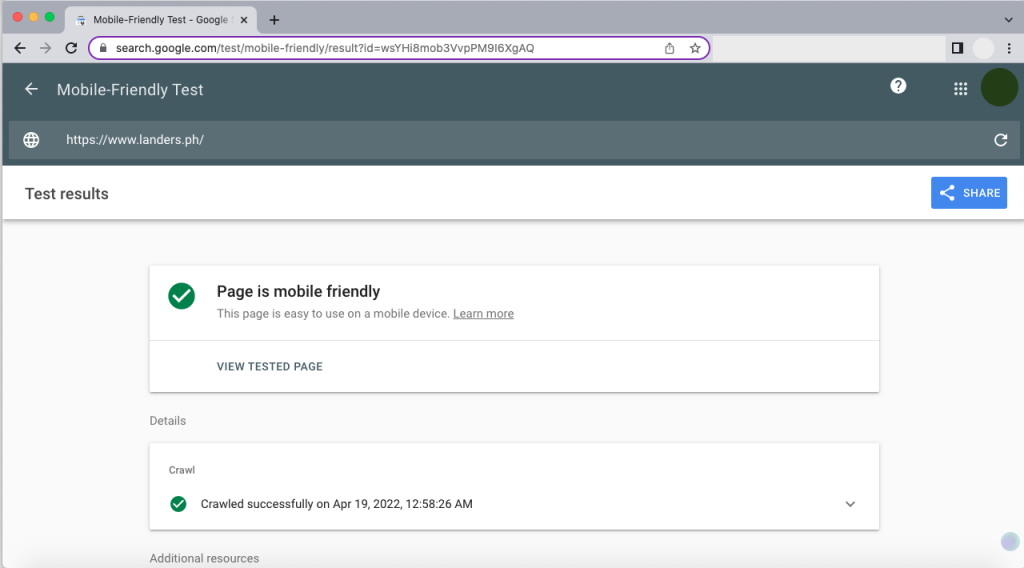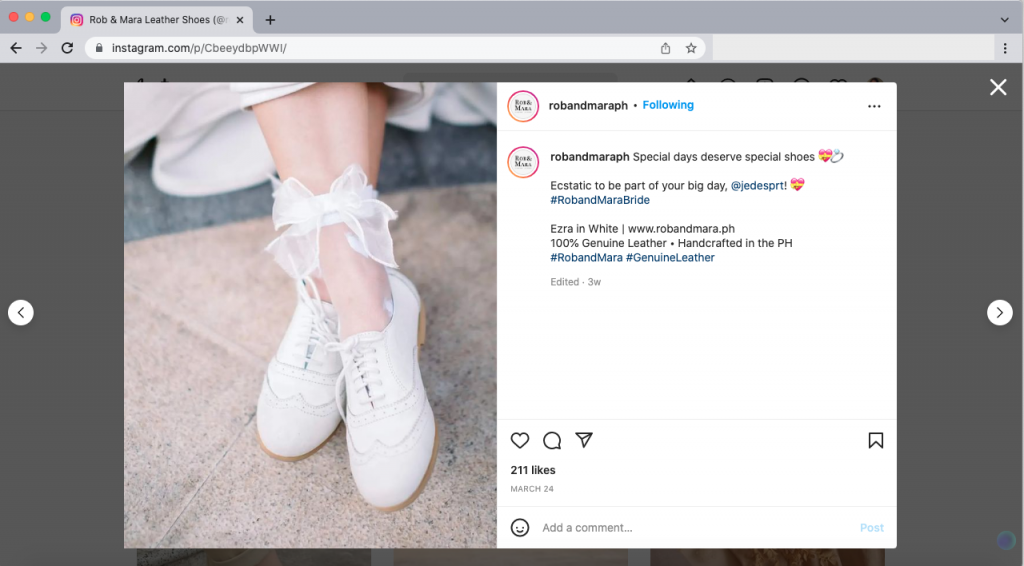Social Media Marketing: A Comprehensive Guide
As 4.62 billion people worldwide (54% of the world’s population) spend more time on social media in 2022, it’s no wonder that businesses are spending more time selling and promoting their products or services as well.
Wouldn’t it be fitting to seize every opportunity social media holds for you as a business owner? Social media users have grown to 424 million between January 2021 to January 2022.
If you want more eyeballs for your brand, there is so much to gain from adding social media marketing to your strategy. Acknowledge that social platforms are your odds-on-favorite in acquiring more leads for your business.
Check out our all-inclusive post about social media marketing.
Social media marketing is another digital marketing method where you can build your brand, increase sales, and drive more site traffic by connecting with your audience on social media.
There are so many reasons why social media marketing can help your business. Some benefits you will get from social media marketing:
It helps increase your brand awareness.
Social media is one most effective marketing channels you can make use of to increase your audience’s awareness of your brand.
With millions of social media users in 2022, it’s no question you can get more eyeballs from your target audience there.
Essentially, what social media does is it organically drives engagement in the form of likes, comments, reposts, and shares.
These types of social engagement help increase your brand awareness.
If there is some social engagement going on between your brand and your audience already, it’ll only be a matter of time before your number of social media followers puffs up.
It generates leads and boosts conversions.
If you haven’t gotten a clue how powerful social engagement is, keep reading.
When you do social engagement and all that jazz, the next thing that will happen is you’ll get more likes and more shares from your followers.
And when you get more content shares, that’s when you could potentially generate more leads.
Yet, we all know that business isn’t just about getting more leads. You need ROI and sales so you need to convert these leads as well.
Here are some ways you can generate leads and boost conversions on social media:
1. Integrate video with your promotions.
If you’re still on the fence about whether short-form or stop-motion videos will work for you or not, stop right there.
Why do Facebook, Instagram, YouTube, and TikTok are the most popular social media platforms for both small businesses and big brands?
Because nowadays, videos are a thing.
If you’re looking to target Millennials and Gen Zs, then it’s high time you include creating video content for your products or service promotions.
In a statistics done by Wyzowl, they surveyed 582 unique respondents and found that:
- 87% of marketers credit video increasing their (website) traffic.
- Video has helped 94% of marketers better explain their product or service.
- 86% of marketers say video helped them generate leads.
- 81% of marketers say video helped them directly increase sales.
- 93% of marketers say video increased brand awareness.
Meanwhile, on the consumers’ side, here’s what Wyzowl found:
- 96% of customers watched an explainer video to learn more about the product or service.
- 88% of people said they were convinced to buy a product or service after watching a brand’s video.
- 78% of consumers say watching a brand’s video convinced them to download an app or software.
Interestingly, 73% of the respondents say they’d prefer to watch a short video when they want to learn more about a product or service.
I hope these numbers will encourage you to start doing short video promotions as early as now. It’s never too late to start.
2. Make compelling calls to action
Over the years, people have become more conscious and savvy when it comes to calls to action (CTA). Unfortunately, hard selling doesn’t work on social media.
Don’t add to the noise by making small changes to your social media profile and captions. Adding a bit of personality to your captions won’t hurt. In fact, it can encourage more engagement with your audiences.
Take a look at one of Melissa’s Instagram image captions. See how they manage to stay relevant with the summer season.

It only goes to show that Melissa values engagement with their followers more than pushing to sell their footwear on the spot.
3. Make your landing page mobile-friendly
With 5.31 billion unique mobile phone users around the world (and still growing at 1.8% every year), it’s in your best interest to create a seamless experience for your customers. To do this, your social landing page must be at the storefront of your social media account.
Let’s take a look at Lander’s Facebook page:

When you click on “Shop on Website” button, it will take you directly to Lander’s site landing page.
As you can see, the featured items on sale above the fold are mostly focused on healthy food. At the same time, you can instantly see the name of the items and prices when you scroll down to its page.
Also, it didn’t take long for the webpage to load. The site speed wasn’t bad as well. Landers made sure that their customers have easy access to their website for smooth checkout.
I also took Google’s mobile-friendly test for Landers to see if they’re mobile-optimized already. Here it is:

If you want to boost conversions for your business, you can use Google’s mobile-friendly test as your benchmark.
To pass the test, you need to make sure that your social landing page or your webpage is optimized for site speed and loading time. When you have both of these important factors, you surely create a seamless experience for your customers.
If you want to increase your sales, nothing is as powerful as using your customers’ photos as your social proof.
In this day and age, people give more prominence to authenticity. They can identify outright if the brand makes enough effort to engage with the customers.
While some brands have wisened up with their marketing strategies, some still need work.
To do this, you may use a short video or a photo taken by your customer with your product in use.
Here’s one great social proof example from Rob and Mara’s Instagram account:

There is not much more evidence you need to know that Rob and Mara appreciate the photos taken from their clients than this.
My two cents? Try to get as much social proof from your customers as you can and use it to gain more leads and boost your sales.
It helps you with an almost instantaneous customer service
As more brands jump into the social media bandwagon, people have begun setting their expectations in getting almost immediate customer feedback and interaction. And you can’t blame customers. They want to make sure that they’re getting the value for what they’re paying.
Some businesses still don’t know that customer service can build meaningful relationships between brands and their customers. In fact, 71% of people who have had a positive experience with a brand on a social media platform are more likely to recommend it to their friends.
Helps build relationships with your customers
When you connect or engage with your social media followers, you’re likely building relationships with them. When you reply with their comments or questions or put the effort into helping your customers in any way that you can, these are ways you’re nurturing them.
The good thing about fostering relationships with your customers is that it’s easier to ask questions about your product or know their challenges that were solved by your product.
Also, if you want to foster loyalty from your customers, you might want to consider a giveaway on occasion to gain their trust.
It helps you understand your competitors
Because most brands and businesses use social media, chances are your competitors are there, too. And with that in mind, social media allows you to check out and understand how your competitor do their marketing strategy or campaigns, interact with their customers and find which product they’re promoting.
Knowing how your competitor moves provide you the opportunity to create a more effective marketing strategy for your brand.
There are 5 pillars that will help make your social media marketing work. These are:
Strategy
You will not be able to do social media marketing right without a sound strategy in place. You need a strategy to identify which goal you need to prioritize, which content resonates with your customers and your brand, and when you should implement your marketing campaigns.
Furthermore, a well-thought-out social media marketing strategy can help you identify which social media channels you might want to focus more of your energy on.
The biggest mistake most brands make is that they try to be present on every social media platform they could get their hands on. This strategy might seem like a good way to find out which platform gets the most engagement, but analyzing the data won’t be easy.
It’s best that you focus on a maximum of 3 social media platforms and put all your efforts to engage with your customers there. If you want to know where most of your customers are, do your research and create your customer avatar or marketing persona.
Creating a marketing persona or customer avatar will also help you choose which content gets the most engagement.
If you want to reach your goals, creating a social media marketing strategy is a must. A social media marketing strategy provides clarity on why you want to reach your goals. I’ll discuss more of this in a while.
Planning and Publishing
Planning saves you time and effort in coming up with ideas for which content gets the most engagement from your audience and figuring out when is the right time to post content. You can avoid adding to the social media noise when you plan your content ahead of time.
You can organize your content schedule by creating a social media content calendar. A social media calendar helps you schedule which content is ideal for your audience, and be consistent in publishing content.
Ideally, you can post content on your social platforms 3-4 times a week for consistency and grow your online presence.
Learn how you can grow your social media presence in 12 steps.
Listening and Engagement
The best way to understand your customers better is through listening and engagement.
A growing following and a business entail conversations with customers. This is when social monitoring and social listening come to your aid.
Social monitoring is a reactive way of keeping track of what your customers say about your brand. You do this by responding to your customers’ feedback, queries, and comments in real-time.
This approach gives you better insight into what your customers say about your product or service. In addition, this provides you the opportunity to engage more with your audience.
Analytics and Report
You can’t measure what you don’t track, so it’s crucial to keep tabs on how your social media marketing performs.
Unlike social monitoring, social listening is proactive. It’s almost similar to social monitoring in the sense that you still do gather feedback and comments from your audience.
Yet for listening, every data gathered is used for analysis to improve your social media marketing strategy.
To do this, you will need social listening tools to help you gather data.
Gathering data can help you gain insight and pick up what’s trending in your industry, and finetune your marketing campaigns to outperform your competitors.
Advertising
Any digital marketing campaign at some point needs a boost that involves both organic and paid advertising. Social media marketing is no exception.
The majority of social media channels offer free sign-ups to users, and for them to provide a better user experience, they offered paid promotions to advertisers.
Don’t get me wrong but paid social media advertising is good in the sense that it helps you get a wider audience reach, apart from your organic social media followers.
If you want to find your target audience, social media advertising platforms can help you precisely identify who they are based on their behavior, demographics, and which electronic device they use.
If you want to build brand loyalty and recognition or increase conversion, invest in social media advertising.
Your social media marketing strategy must provide how you’re going to achieve your social media marketing goals.
Essentially, your strategy will serve as your roadmap so you can get to your destination with success.
To give you a context on how you will create your social media strategy, here are some steps needed:
If you want to reach your goal, you need to answer your “why”.
For your social media strategy to work, you need to have specific, measurable, achievable, relevant, and time-bound (SMART) goals. Without SMART goals, you can’t track your progress.
Make at least three social media marketing goals to make them more achievable first.
Learn about your audience by doing research
Nothing can be truer than this quote “If you sell to everyone, you’re selling to no one.”
Don’t fall into the trap of marketing your product or service to everyone. Create your audience persona from the get-go to save you time, effort, and money in running campaigns.
If you don’t know how to create your persona, think about the audience you’re trying to reach and figure out why you’re targeting them for your product or service.
What pain points or problems do they have that you want to solve?
Get to know your followers or customers to a deeper level so you can easily engage with them on your content posts.
Don’t overwhelm yourself by setting up an account on every social media platform you can find.
To get a head start, choose which social media platform you will often post your content.
But, when you do this, make sure you have done your research already and identify which network is best for engaging with your customers, promoting your company culture, customer feedback, and user-generated content.
To track your progress, focus on metrics that provide real value for your business like engagement, reach, conversion rates, hashtag performance, and click-through rates.
Identify what works and what doesn’t, which network the majority of your audience use and how are they using it, and how does your competitor fare with their online presence.
Doing an audit and identifying your most important KPIs will help you focus on your social media marketing goals.
Get to know your industry competitor
When you keep your competitor close, you gain insight into their social media strategy. You can gauge which social media platform is their weakness, and which one is their strength. You can do this with a competitive analysis.
A competitive analysis allows you to determine who your competitor is and what they’re doing well or wrong. With competitive analysis, you can easily identify opportunities to outsmart them.
While it’s not bad to compete for head to head with your brand rival, it’s going to be an uphill battle. If you want to make your social media marketing strategy work, focus on your competitor’s weakness instead.
A social media marketing strategy without a social media content calendar won’t do you good.
Your strategy always comes with a plan. Without a plan, you won’t get to your destination. A social media content calendar serves as your planning tool so you can easily prepare images or videos, and write captions or short content ahead of time.
If you prepare your content ahead of time, you will be able to create posts designed to engage your audience.
Once you’re done creating content, it’s time to schedule these accordingly. See which time of day you receive the most engagement with your content posts and stick to that schedule going forward.
Create engaging and compelling content
A good mix of educational and entertaining content works on almost every social media platform. When you have both of these elements in your content, you’re creating engaging and compelling content.
In addition, if you want to keep your audience engaged with your social media platform, you need to align your posts with what purpose your social media channels serve.
For example, if your goal for LinkedIn is to share your company culture and values, your content must be aligned with it.
If you’re using Facebook for your giveaways, be consistent in creating Facebook Live video content.
For example, you can use VEED, a free online screen recorder and video editing tool used by content creators around the world in making videos for social media posts. You can use the free version to record up to 10 minutes (perfect for TikTok), then add subtitles and you’re done. It works on Windows, Mac, and mobile, so you can use it even if you’re on the go. They’ve got everything covered as well with their 100% renewable energy powered servers so you won’t have to worry about environmental impact.
Get creative. Create content that is both suited to your audience and to your brand’s purpose.
Also read: 10 Types of Digital Marketing Channels to Try [in 2022]
Now that we’ve covered almost everything you need to know about social media marketing, you might ask:
Which social media platform will get me more leads and increase conversions?
As I mentioned earlier, it entirely depends on your goal.
However, I want to help you choose which social media platform will help you achieve success with your social media marketing.
So, here are the most popular social media platforms in January 2022 including their statistics and their uses:
Users: 2.9 billion monthly active users
Top 3 dominant age groups: 25-34, 18-24, 35-44
Best for: business to consumers, direct to consumers, brand awareness, advertising
Facebook places first in the most active social media platform rankings to this day, in spite of the so-called “adpocalypse”, and surrounding controversies with the platform. 43.4% of Facebook’s advertising audience is female, and 56.6% is men.
YouTube
Users: 2 billion monthly active users
Top 3 dominant age groups: 15-25, 26-35, 36-45
Best for: business to business, business to consumer, how-to videos, brand awareness, long-form edutainment videos
Because YouTube is the second most popular platform, the majority of marketers find it easy to build a community here. In addition, because YouTube is also popular among young demographics, it continues to innovate in terms of content video forms.
Its short-form videos mostly cater to the younger demographic, while long-form videos appeal to a variety of audiences.
Users: 1.4 billion monthly active users
Top 3 dominant age groups: 25-34, 18-24, 35-44
Best for: business to consumer, (emerging) business to business, user-generated content, advertising, high-quality videos and images
Instagram ranks 4th’s most active social media platform in the world. When Instagram launched in 2010, it only took them 3 years to double its user base to 2 billion.
Because Instagram is a visually compelling content social platform, many brands and influencers have successfully promoted their products here, making it a potential e-commerce hub even to this day.
TikTok
Users: 1 billion monthly active users
Top 3 dominant age groups: 10-19, 20-29, 30-39
Best for: business to consumer, (emerging business to business) short-form creative videos, user-generated content, brand awareness
TikTok disrupted the social media world as it has become the most downloaded short-form video platform since its inception.
It became even more popular in 2020. Brands and influencers have jumped on the short-form video bandwagon, and so marketers found TikTok’s potential in building community within their audiences here as well.
Users: 217 million monthly active users
Dominant age groups: 18-29, 30-49
Best for: business to business, business to consumer, customer service, community building, public relations
Surprisingly, Twitter remained consistent every year, although its platform was majorly used by the younger demographics nowadays. This platform became a prime place to discuss events, what’s trending, and breaking news.
On the other hand, Twitter has expanded and offers Spaces, a new audio tool that could potentially breathe life into the platform.
LinkedIn
Users: 810 million monthly active users
Dominant age groups: 25-34, 35-54
Best for: business to business, social selling, business development
LinkedIn is almost similar to Facebook as it’s a social network – for professionals. This platform demographic is mostly B2B professionals and is the marketer’s perfect haven for generating leads.
If you’re seeking new opportunities or simply looking to network with like-minded professionals, this will be your go-to platform.
Key Takeaway
Billions of people are on social media today. If you’re looking to prioritize social media marketing for your business, you’ve made a good choice.
What sets social media marketing apart from other digital marketing types is that it enables you to connect with people instantaneously, in real-time.
There are virtually endless opportunities with this type of marketing. However, determining your business’ course of action can be daunting.
To avoid overwhelm, read more and understand the trends in social media marketing.
Invest the time and effort into researching available resources like this post to gain a deeper understanding of how social media marketing can boost awareness, conversions, and engagement for your business.
